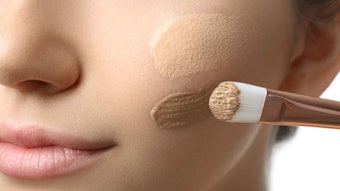
Formulators of personal care products for children are faced with the difficult task of creating products with maximum care and minimum risk, all while trying to be innovative. Although young infants 0–12 months are sometimes treated with emollient oils and zinc oxide emulsions, many regions of the world do not apply skin care to children this young. The needs of a child’s skin evolve and change with age; therefore, one should ideally differentiate skin care for children into three groups: infants and toddlers (1–3 years); elementary-aged children (4–10 years) and pre-teenagers (10–12+ years).1 In the youngest skin care segment, an emollient effect is the primary goal, while the goal of the second segment is to protect from dryness caused by water sports and UV exposure. In the oldest group, seborrhea and acne treatment are necessary. This column will address the requirements of the first group, with particular attention to skin care emulsions.
Infant skin is different from adult skin in many ways. First of all, it is characterized by a immature stratum corneum with a higher moisture content and looser structure, compared with adult skin. Skin in infants is also about 20–30% thinner than in adults,2 and it produces less sebum and sweat.3 In other words, it is less protected from the penetration of substances, and its pH buffering capability does not respond quickly.4
Baby skin shows extreme reactivity to a wide range of topically applied substances. Frequently it is affected by diaper rash dermatitis due to prolonged contact with urine and feces in occlusive conditions. Finally, it has a number of hair follicles per square centimeter, abundantly higher than in adult skin, which increases risk of deeper penetration of substances. Even though the amount of skin surface lipids is significantly lower in infants than in healthy adults, almost all evaluation methods show that the barrier function adequately protects the infant, even if the barrier function is lower than in adults. Any induction of toxic effects into the body via the skin is mainly due to the greater skin surface/body ratio.5
The key requirements for baby skin care creams include: a pH value to match the acid mantle (4.2–5.6); the ability to decrease water evaporation and the skin’s tendency to dry out; quick moisturizing and protective effects; benefits such as preventing and reducing inflammation; microbial purity and ability to counteract microbial growth; sensory reward, i.e., freshness, during and after application; maximum purity from all toxic, irritant and allergenic substances; no transdermal delivery enhancers; and chemical and microbial stability.
Access the complete article in the July 2013 digital edition.










